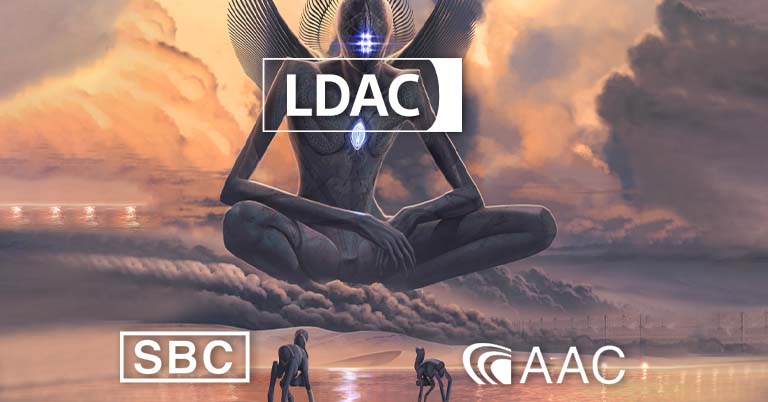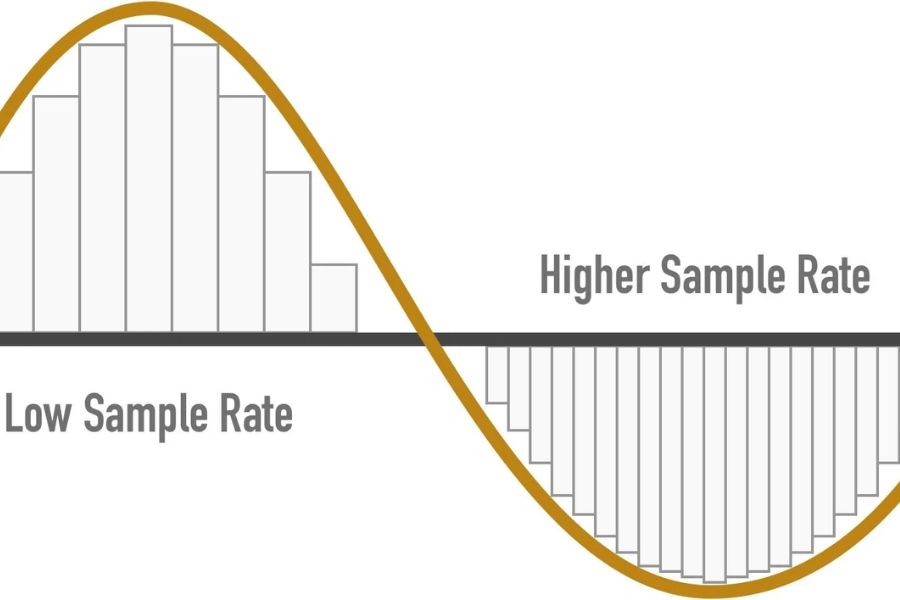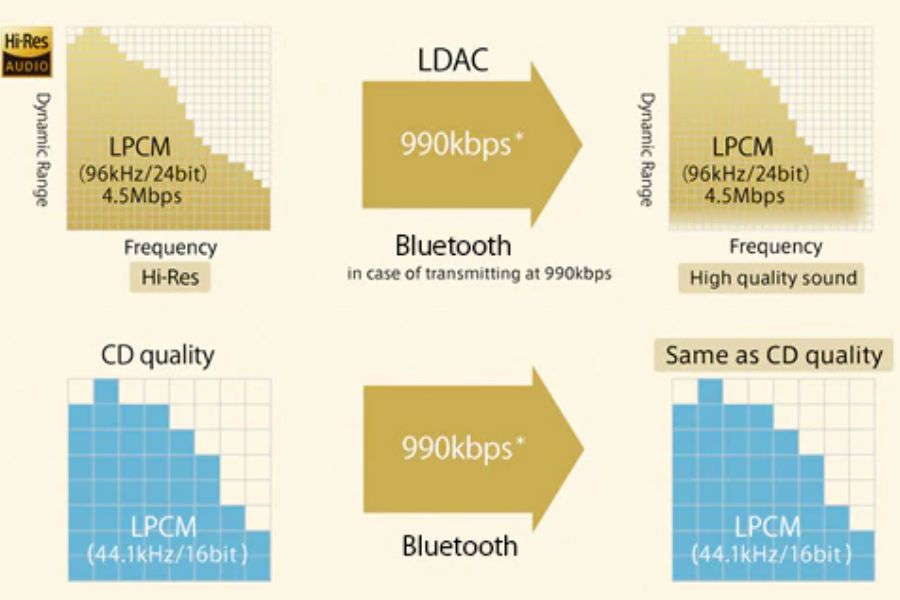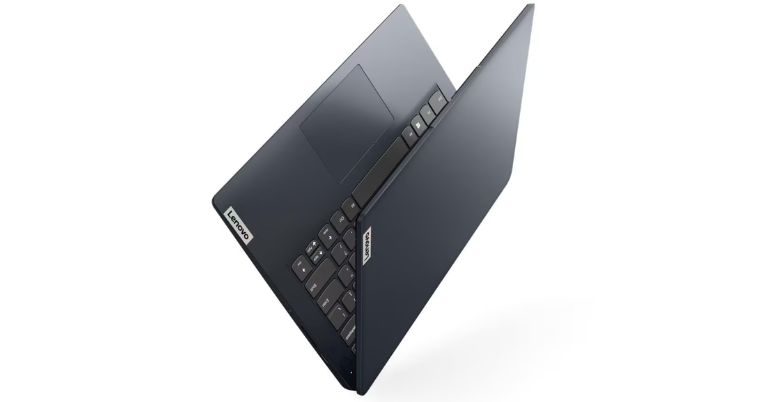
LDAC has gained popularity as a listener-grade Bluetooth codec due to its promise of Hi-Res playing and much greater bit-rate compared to other codecs. Because LDAC is a software codec, it is compatible with a broad range of devices. Before looking directly at the LDAC’s capabilities, it is important to understand what codecs are.
Codecs Overview
The term “codec” originates from the words “coder” and “decoder,” which accurately reflects its function. It refers to the process of encoding and decoding compressed audio or video files to reduce their size. Various codecs exist for encoding and decoding audio and video, each offering different levels of quality and loss.
To understand codecs fully, various terms come into play. For that, first, let’s look at three primary approaches to digitally storing audio: uncompressed, lossless compression, and lossy compression.
Methods to store audio digitally
Uncompressed:
An uncompressed file retains audio data exactly as it’s recorded. However, the drawback lies in their size – uncompressed files are huge, making them less suitable for portability, and they consume a significant amount of storage space. Furthermore, transmitting uncompressed files demands a large amount of bandwidth. This is precisely why audio is often compressed.
Lossless compression:
Lossless compression is a technique that reduces file size without sacrificing much data during the compression process. While lossless compression takes up less storage space than uncompressed files, the resulting file sizes can still be quite large.
In recent times, Lossless has gained viability as a practical storage choice, thanks to larger and more affordable hard drives. The huge file sizes of lossless formats made streaming them unfeasible due to the high bandwidth requirements. But things are shifting as high-bandwidth internet connections become more accessible.
Lossy compression:
The third common audio storage method is lossy compression, seen in formats like MP3 and AAC. These formats, like MP3, use psychoacoustic models to decide which audio parts can be removed without losing quality. Usually, this means removing inaudible elements. MP3 (320 kbps) and AAC (256 kbps) are nearly indistinguishable from uncompressed lossless formats in top quality.
In summary:
| File Type | Pros | Cons | Format |
| Uncompressed |
|
|
|
| Compressed Lossless |
|
|
|
| Compressed Lossy |
|
|
|
Audio quality and technology
There exist different audio formats to offer varying levels of audio quality and file size, serving different needs and preferences.
CD-Like , MP3, and High-Resolution Audio
CD audio is the audio format found on Compact Discs (CDs). This format has been widely used for audio recordings and playback, providing clear and high-quality sound that has been a benchmark for audio quality for a long time.
MP3 (MPEG Audio Layer III) reduces the file size of audio recordings by removing some of the less noticeable audio data, resulting in smaller files that are easier to store and share. These files are commonly used for digital music distribution, streaming, and portable audio devices due to their compact size.
High-resolution (Hi-Res) Audio refers to audio content that is recorded and reproduced with a level of detail that is a more accurate representation of the original recording, allowing listeners to hear subtle details and dynamics that might be lost in standard audio formats. Comparing bitrates, High-Resolution Audio impressively boasts 9,216 kbps, almost seven times that of CDs (1,411 kbps) and nearly 29 times more than MP3s (320 kbps). A higher bitrate signifies a more accurate signal measurement.
Comparing bitrates, High-Resolution Audio impressively boasts 9,216 kbps, almost seven times that of CDs (1,411 kbps) and nearly 29 times more than MP3s (320 kbps). A higher bitrate signifies a more accurate signal measurement.
MP3 compression loses much information, causing softer bass, weakened drums, and blurred guitar attacks. CDs outperform MP3s, yet their bulkiness and navigation hassle are downsides. High-resolution audio, in contrast, retains every detail. It compresses without losing data, preserving quality in less space. Also, it offers both top-tier quality and convenient accessibility.
Why codecs?
Listening through wired earphones, the difference between uncompressed files and lossy/lossless compressed audio is hard to distinguish. Shifting to Bluetooth audio, it has limited bandwidth for audio transmission. Bluetooth connections vary due to factors like interference, distance, and devices. Thus, audio must be compressed for Bluetooth transmission, following specific codecs.

Let’s view some common terms that will make you understand Codecs and audio as a whole better.
Bitrates
Bitrate refers to the number of bits (binary digits) of data transmitted or processed per unit of time. It’s commonly used to describe the amount of data in audio or video streams. Higher bitrates usually mean better quality, but they also require more bandwidth or storage space. Bitrate is commonly measured in bits per second (bit/s). Higher bitrates generally mean better audio quality. For downloads or physical formats, higher bitrates are feasible. However, for streaming, lower bitrates are preferred to ensure smooth playback.
Sample rates
Sample rate, in the context of audio, is the number of samples taken per second to convert the continuous sound wave into a digital format. It determines how accurately the audio is recreated. The units for sample rate are samples per second (sps) or Hertz (Hz). In music production, a higher sample rate can capture subtle instrument sounds more accurately.

Latency
Latency measures the time it takes for a packet of data to travel from being sent to being received. In Bluetooth, this time is measured in milliseconds. The delay can change due to factors like how strong the signal is, the power of the devices, how Bluetooth is set up, and the kind of technology used to code and decode the data. In real-time applications like gaming or live performances, low latency is crucial to ensure that audio syncs well with visuals and actions.
Bit-depth
Bit depth is like the “color depth” of audio. Just as more colors in an image make it richer, higher bit depth in audio means more detail in sound. It helps capture soft sounds and loud sounds accurately, making the audio quality better. Bit depth is measured in bits. In practical terms, higher bit depths can prevent distortion in quieter parts of a recording and keep details in loud parts.

Bluetooth Audio Codecs
Here is a list of certain codecs that are commonly used:
SBC
SBC (Subband Coding), the fundamental Bluetooth codec, is found everywhere and works on all devices. It demands minimal processing power. However, it’s a lossy codec with varying bitrates. Theoretically, it can manage 328 kbps at 16-bit depth and 48 kHz sample rate, which sounds impressive.
But its variable nature often prevents reaching these numbers. SBC performs decently in high-quality environments, yet inconsistency and different standards among manufacturers make it hit or miss. While available in all Bluetooth devices, SBC should only be used when no other option is available.
Licensing for SBC
It does not require separate licensing fees for SBC encoding, it’s worth noting that manufacturers who want to include decoding functionality in their products may need to obtain a license from the Bluetooth SIG and potentially pay a fee for the decoding part. This fee is generally lower than for other codecs, making SBC an accessible option for manufacturers.
- You might also want to read these:
AAC
AAC, familiar to Apple devices, is lossy and utilizes psychoacoustic modeling to reduce file sizes. Bluetooth for AAC supports up to 320 kbps, usually, it won’t exceed 256 kbps. It supports 16-bit depth (seems to be capable of 24-bit) and up to 96 kHz sample rates, with a latency of up to 150 ms. While AAC is iOS’ favored Bluetooth codec, it may not perform well on various Android devices, making SBC potentially better due to this performance gap.
Licensing for AAC
Manufacturers intending to incorporate Advanced Audio Coding (AAC) in their products must secure licenses from MPEG LA, covering both encoding and decoding aspects. Fees vary based on factors like usage and implementation. These licenses enable the lawful integration of AAC technology into devices.
aptX
aptX, a Qualcomm Bluetooth audio codec, stands apart from AAC by avoiding psychoacoustic modeling. It maintains a consistent bitrate: 352 kbps at 44.1 kHz or 384 kbps at 48 kHz, with a 16-bit depth. Latency is 150ms or more. Its fixed-rate ensures top-quality playback, making it favored over SBC. It’s Android’s go-to but unavailable on iOS.
Extending the aptX is the aptX HD, offering enhanced quality than its predecessor. It has a fixed 576 kbps rate, 24-bit depth, and 48 kHz sample rate. Latency usually exceeds 250ms, unlike SBC.
aptX Adaptive is aptX’s latest iteration, aiming for stable, low-latency, and high-quality audio. It adapts between 279-420 kbps, supporting 16 and 24-bit depths, and 44.1 and 48 kHz sample rates.
Licensing for aptX lineup
Licensing for the aptX codec lineup, developed by Qualcomm, typically involves negotiating with Qualcomm for both encoding and decoding licenses. The licensing terms and fees can differ based on the specific aptX variant, usage, and the manufacturer’s product distribution.
LDAC
LDAC has gained popularity as a listener-grade Bluetooth codec due to its promise of Hi-Res playing and much greater bit-rate compared to competing codecs. Because LDAC is a software codec, it is compatible with a broad range of devices and also is a certificated codec of “Hi-Res Audio Wireless”.
LDAC distinguishes itself by using advanced compression techniques and offering higher data transmission rates, with the aim of delivering quality sound in comparison to other Bluetooth audio codecs wirelessly. This technology is relatively newer when compared to codecs like AAC and SBC.
It can transmit audio at up to 990kbps with high quality (24-bit depth and 96kHz sample rate), which is a big step up. However, there are some drawbacks. LDAC offers three connection profiles (330, 660, and 990 kbps) based on connection strength. Only the top two profiles are superior to aptX and aptX HD, but devices might not always use these better profiles. So, if the device ends up using the 330 kbps option, aptX might have been a better choice. Also, it is claimed that LDAC is capable of transmitting audio in 16-bit/44.1kHz CD quality without any compression or alteration.
LDAC encoder is Open source
Sony developed LDAC and continues to integrate it into their products like wireless earbuds and headphones. Yet, the LDAC encoder is open-source, meaning other companies can also use it in their own products. LDAC has become part of the Android Open Source Project since the release of Android 8.0 “Oreo” in 2017. Brands like Anker Life have also adopted the technology in their audio accessories. However, Apple users are not provided with LDAC support.
It’s important to understand that while LDAC’s encoding technology is open and doesn’t incur licensing fees, there are associated costs for the decoding side. Companies that manufacture earbuds and headphones need to pay licensing fees to include LDAC decoding functionality in their products.
Is LDAC important to have?
The importance of LDAC depends on individual audio preferences and requirements. LDAC offers enhanced audio streaming quality over Bluetooth connections, which can be advantageous for those who prioritize audio fidelity and have compatible devices.
There are different factors to consider and determine if it is that important. To fully benefit from LDAC, both the transmitting and receiving devices (such as your smartphone and headphones/speakers) need to support LDAC. Without compatible devices, the advantages of LDAC might not be accessible. Also, in a noisy environment, the differences between LDAC and other codecs might be less noticeable.
Likewise, in scenarios with limited data plans or slower internet speeds, LDAC’s higher bitrates could lead to increased data consumption, potentially making it less suitable for such situations. However, LDAC’s higher bitrates and potential for Hi-Res audio playback can enhance sound quality compared to other Bluetooth codecs, making it valuable for audio enthusiasts seeking top-notch audio experiences.
Bitrates in Music Streaming Services and LDAC’s capabilities
Initially, when sound is recorded, computers capture it in a digital format, aiming to preserve its full quality. But when it’s put on platforms like YouTube or Spotify, it’s squeezed a lot – sometimes down to a tenth of the original. Sadly, this process removes much of the original data, making it hard to get the true original back. The table below illustrates the highest possible bitrate that different streaming services support.
| Music streaming services | Maximum bitrate |
| Apple Music | 9216 kbps |
| Spotify | 320 kbps |
| Amazon Music | 9216 kbps |
| Deezer | 1411 kbps |
| YouTube Music | 256 kbps |
| Tidal | 9216 kbps |
While music streaming services like Spotify and YouTube use lower bitrates, which means they compress the music quite a bit, LDAC headphones still have the potential to offer better audio quality than regular Bluetooth headphones with these services. However, LDAC’s full capabilities might not be fully utilized in these cases due to the limitations of the bitrates used by these services. On the other hand, for streaming platforms like Apple Music, Amazon Music, and Deezer that support higher bitrates, LDAC’s advanced capabilities are likely to be better utilized.
Final words
LDAC is not a must; however, having an LDAC-enabled device can clearly enhance audio experiences. Its capacity for Hi-Res audio and high bit rates offers a potential for outstanding sound quality. Nevertheless, LDAC’s impact depends on device compatibility, individual audio preferences, and internet speeds while streaming. Users with devices compatible with LDAC and platforms supporting higher bitrates, like Apple Music and Deezer, can truly appreciate its advanced capabilities.
- Meanwhile, check out our video on “Why buy Budget Earbuds?”.








![Best Gaming Laptops in Nepal Under Rs. 250,000 (रु 2.5 Lakhs) [2025] Best Gaming Laptops Under 2.5 lakhs in Nepal [Feb 2025 Update]](https://cdn.gadgetbytenepal.com/wp-content/uploads/2025/02/Best-Gaming-Laptops-Under-2.5-lakhs-in-Nepal-Feb-2025-Update.jpg)
![Best Gaming Laptops in Nepal Under Rs. 120,000 (रु 1.2 Lakhs) [2025] Best Budget Gaming Laptops Under Rs 120000 in Nepal 2025 Update](https://cdn.gadgetbytenepal.com/wp-content/uploads/2025/05/Best-Budget-Gaming-Laptops-Under-Rs-120000-in-Nepal-2024-Update.jpg)
![Best Laptops Under Rs. 80,000 in Nepal [2025] Best Laptops Under 80,000 in Nepal March 2025 Update](https://cdn.gadgetbytenepal.com/wp-content/uploads/2025/03/Best-Laptops-Under-80000-in-Nepal-March-2025-Update.jpg)
![Best Laptops Under Rs. 70,000 in Nepal [2025] Best Laptops Under 70,000 in Nepal March 2025 Update](https://cdn.gadgetbytenepal.com/wp-content/uploads/2025/01/Best-Laptops-Under-70000-in-Nepal-March-2025-Update.jpg)
![Best Mobile Phones Under Rs. 15,000 in Nepal [Updated 2025] Best Phones Under 15000 in Nepal 2024 Budget Smartphones Cheap Affordable](https://cdn.gadgetbytenepal.com/wp-content/uploads/2024/03/Best-Phones-Under-15000-in-Nepal-2024.jpg)
![Best Mobile Phones Under Rs. 20,000 in Nepal [Updated] Best Mobile Phones Under NPR 20000 in Nepal 2023 Updated Samsung Xiaomi Redmi POCO Realme Narzo Benco](https://cdn.gadgetbytenepal.com/wp-content/uploads/2024/01/Best-Phones-Under-20000-in-Nepal-2024.jpg)
![Best Mobile Phones Under Rs. 30,000 in Nepal [Updated 2025] Best Phones Under 30000 in Nepal](https://cdn.gadgetbytenepal.com/wp-content/uploads/2025/01/Best-Phones-Under-30000-in-Nepal.jpg)
![Best Mobile Phones Under Rs. 40,000 in Nepal [Updated 2025] Best Phones Under 40000 in Nepal 2024 Smartphones Mobile Midrange](https://cdn.gadgetbytenepal.com/wp-content/uploads/2024/02/Best-Phones-Under-40000-in-Nepal-2024.jpg)
![Best Mobile Phones Under Rs. 50,000 in Nepal [Updated 2025] Best Phones Under 50000 in Nepal](https://cdn.gadgetbytenepal.com/wp-content/uploads/2025/01/Best-Phones-Under-50000-in-Nepal.jpg)
![Best Flagship Smartphones To Buy In Nepal [Updated] Best flagship phone 2025](https://cdn.gadgetbytenepal.com/wp-content/uploads/2024/07/Best-Flagship-Phones-who-is-it-ft-1.jpg)